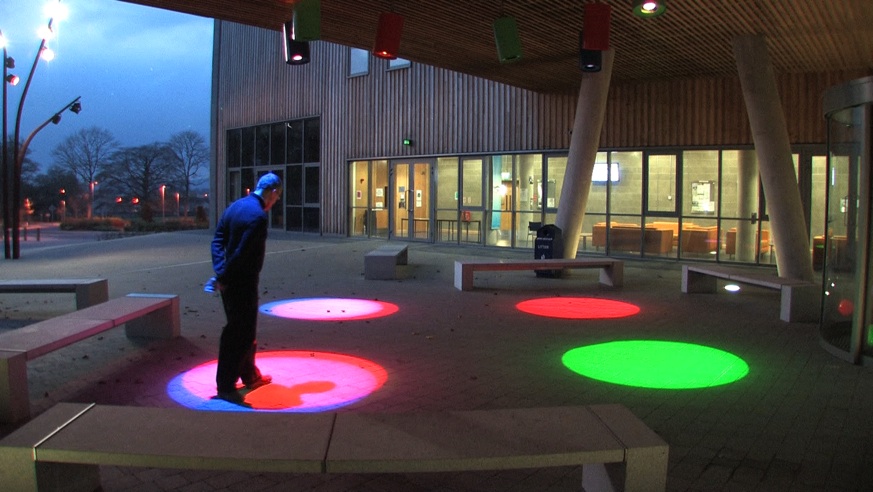The installation was inspired by Dr. Patrick Cavanagh’s work on colour perception and was developed through a public commission for M.I.C. in Limerick: Colour Wheels is a permanent light installation for the new entrance of the ‘Mary I’ campus. Each of the 12 lamps project a circle of primary colour (red, green or blue) which overlap to make secondary colours (yellow, cyan and magenta). Three superimposed projections will make a circle of white light in which a person will cast three shadows, one in each of the secondary colours. A computer programme - reacting to data coming from a surveillance camera - controls the dimmers of all twelve projectors, creating more complex interactions of colours with the people who are moving through the entrance space and the adjacent student forum.__________________




A new light-based installation using movement tracking to explore how primary colours mix to make secondary and complex colours. The installation is a composition of 3 interlocking wheels of projected light, each made of concentric circles of red, green and blue fading in and out of the composition in reaction to movement in the space and in relation to each other._____________________
Humans have trichromatic vision. The trichromatic theory, or Young-Helmholte theory, proposed in the 19th century by Thomas Young and Hermann von Helmholte, states that the retina's three types of cones are preferentially sensitive to blue, green, and red. Helmholtz used colour-matching experiments where participants would alter the amounts of three different wavelengths of light to match a test colour. Participants could not match the colours if they used only two wavelengths, but could match any colour in the spectrum if they used three. The theory became known as the Young-Helmholtz theory of colour vision.
COLOUR WHEELS
Light installation
Dimensions : variable
Year : 2011
Our ancestors probably survived because their trichromatic vision allowed them to pick out fruit quickly against a background of another colour, thus trichromatic vision would have had considerable survival value for primates. (Steward & Cole 1989). Dogs, on the other hand, have only two types of cones, and see far less colours than we do. They survived too, but then dogs don’t eat fruit.

The giant fruit (below) were created by students from the Department of Arts Education & Physical Education in the Facility of Education in MIC in Limerick, as part of Cleary & Connolly’s AIB Prize exhibition Still Life With…at LCGA and The Hunt Museum, Limerick in 2010.

The giant fruit

